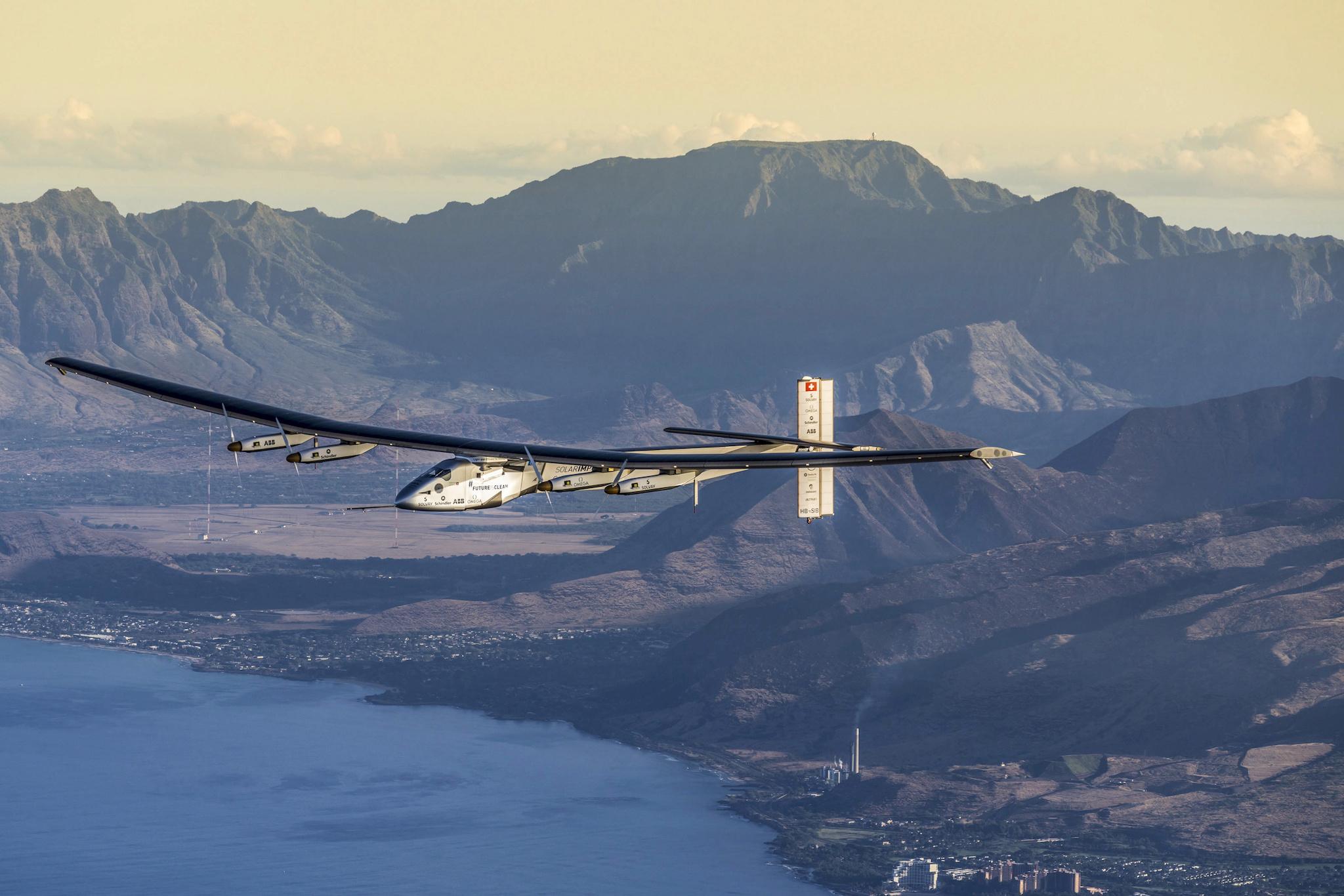Solar Impulse 2: Sun-powered plane finishes round-the-world trip as pilots argue clean flights will become the norm
The journey puts to rest the question of whether it is possible to fly around the world without polluting it, the pilots say

The first round-the-world flight powered only by the sun has touched down in Abu Dhabi, after taking off from there more than a year ago.
Since its last trip to the United Arab Emirates, the Solar Impulse plane has flown 25,000 miles powered only by solar energy. The engineers and pilots behind it hope that the successful journey can stand as a proof of the value of clean technologies – and hopefully bring such flights to passenger airlines.
The pilots have said that they think that in the next 10 or 20 years people will be able to make journeys in just the same way – without a drop of fuel used.
Since the Solar Impulse 2 plane took off in March 2015, as a way of demonstrating that technology, it has made 16 stops in various places around the world. It used those stops to argue for the value of such clean energy.
After landing, pilot Bertrand Piccard was greeted by Solar Impulse co-founder and fellow pilot Andre Borschberg. The two Swiss pilots who founded the project have been swapping flying shifts as the plane as made its way across the world – and upon finishing the journey, hugged and pumped their fists in the air.
"The future is clean. The future is you. The future is now. Let's take it further," Piccard said, speaking through a microphone to applause and cheers from a crowd that included Prince Albert of Monaco.
The aircraft is uniquely powered by 17,248 solar cells that transfer energy to four electrical motors that power the plane's propellers. It runs on four lithium polymer batteries at night. The plane's wingspan stretches 236 feet (72 meters) to catch the sun's energy.
At around 5,070 pounds (2,300 kilograms), the plane weighs about as much as a minivan or mid-sized truck. An empty Boeing 747, in comparison, weighs 400,000 pounds (180,000 kilograms). To help steady it during takeoffs and landings, the plane was guided by runners and bicyclists.
Despite its historic mission, the Solar Impulse 2's journey was far from quick or problem-free.
The pilots faced a nine-month delay a year ago after the plane's batteries were damaged during a flight from Japan to Hawaii. It was also delayed for more than a week in Cairo ahead of its final flight to Abu Dhabi when Piccard fell ill, and due to poor weather conditions.
Over its entire mission, Solar Impulse 2 completed more than 500 flight hours, cruising at an average speed of between 28 mph (45 kmh) and 56 mph (90 kmh). It made stops in Oman, India, Myanmar, China, Japan, the United States, Spain, Italy, Egypt and the United Arab Emirates. Its North American stops included California, Arizona, Oklahoma, Ohio, Pennsylvania and New York.
The carbon-fiber plane is a single-seater aircraft, meaning its two Swiss pilots — Piccard and Borschberg— had to take turns flying solo for long days and nights. To calm their minds and manage fatigue during the long solo flights, Borschberg practiced yoga and Piccard self-hypnosis.
In a statement this week, Borschberg said it is no longer a question of whether it's possible to fly without fuel or polluting emissions.
"By flying around the world thanks to renewable energy and clean technologies, we have demonstrated that we can now make our world more energy efficient," he said.
The pilots would rest a maximum of 20 minutes at a time, repeating the naps 12 times over each 24-hour stretch.
It took 70 hours for Piccard to cross the Atlantic Ocean, which was the first by a solar-powered airplane.
Borschberg's flight over the Pacific Ocean at 118 hours — about five days and five nights — shattered the record for the longest flight duration by an aircraft flying solo.
Neither pilot was able to stand in the cockpit while flying, but the seat reclined for stretching and its cushion could be removed for access to a toilet. Goggles worn over the pilot's eyes flashed lights to wake him up while armbands placed underneath their suits buzzed when the plane was not at flying level.
The plane also did not have a pressurized cockpit so Borschberg and Piccard could feel changes in temperature. The pilot's blood oxygen levels were monitored and sent back to ground control in Monaco.
Hot temperatures in the Middle East this time of year cause thermals and turbulence that forced Piccard to fly longer periods of time with an oxygen mask as he piloted the last leg of the trip from Cairo to Abu Dhabi in roughly three nights and two days.
Piccard, a psychiatrist, is the son of undersea explorer Jacques Piccard and a grandson of balloonist Auguste Piccard. In 1999, he became the first person to circumnavigate the globe non-stop in a hot air balloon.
Borschberg, an engineer and graduate of Massachusetts Institute of Technology, is also an entrepreneur. He launched the Solar Impulseproject in 2003 with Piccard.
The project is estimated to cost more than $100 million. The UAE-based Masdar, the Abu Dhabi government's clean-energy company, was a main sponsor of the flight. There were more than 40 additional sponsors, including Omega, Belgian chemical company Solvay, Swedish-Swiss automation corporation ABB, Swiss manufacturer Schindler, Google and Moet Hennessey, among others.
Additional reporting by agencies
Read More: Solar panels
Join our commenting forum
Join thought-provoking conversations, follow other Independent readers and see their replies
Comments